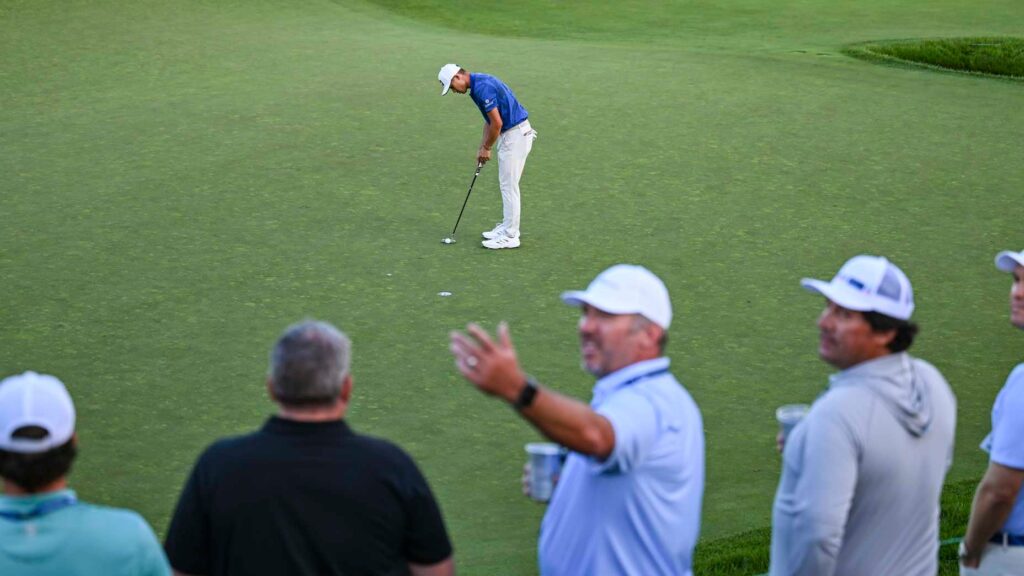In the world of golf betting, there is a unique type of wager known as a “no” bet, where bettors place money on specific golfers not winning a tournament. These bets are popular among big-money gamblers who have the bankroll to support large bets against odds that heavily favor the bettor. With the golf season starting anew, these “no” bets have returned, with several high-stakes wagers being placed at the Sentry tournament, as tracked by the Sporttrade Whale Tracker account.
The trend of “no” bets gained popularity when a well-known golf bettor, Rufus Peabody, tweeted about losing a significant sum of money when Bryson DeChambeau won the U.S. Open. Peabody’s loss sparked interest in these types of bets, as the potential for a small return on a large wager is enticing for those who can afford it. The key to success with these bets lies in identifying opportunities where the odds are slightly in the bettor’s favor, even if by just a small margin.
While mainstream gambling sites like DraftKings and FanDuel do not offer “not to win” bets, they are available on betting exchanges, where bettors can buy, sell, and trade gambling opportunities much like stocks. This unique betting format allows for a strategic approach to wagering, particularly in golf where there are typically a large number of players in a tournament. With numerous theoretical winners, the odds of any specific player winning are low, making “no” bets an attractive option for savvy gamblers.
One of the keys to successful “no” bets in golf is leveraging specific course conditions, weather factors, and other variables unique to the sport that can impact player performance. By analyzing these factors and identifying discrepancies between offered odds and expected outcomes, bettors can gain a competitive edge over time. The goal is to achieve a near 100% success rate on these bets across multiple tournaments, maximizing potential returns.
In a recent example from the Sentry tournament, a bettor placed a substantial wager of $9,791 on Matt Fitzpatrick not winning the event. The odds implied a 98.92% chance of Fitzpatrick not winning, but DataGolf, a leading golf analytics website, projected a 99.3% likelihood of his non-win. This slight variance in odds highlights the opportunity for bettors to capitalize on discrepancies and potentially earn a profit on their bets.
While “no” bets carry inherent risks, especially in golf where outcomes can be unpredictable, they can be a valuable addition to a gambling portfolio when pursued strategically. As the golf season progresses and major tournaments unfold, the allure of these high-risk, high-reward bets will continue to attract seasoned gamblers looking to leverage their expertise and financial resources for potential gains. The art of the “no” bet in golf is a game of precision, timing, and calculated risk-taking that rewards those willing to push the boundaries of traditional sports betting.


